The American multinational corporation General Electric (GE) on Thursday (June 22) announced it has signed an agreement with India’s state-owned Hindustan Aeronautics Ltd (HAL) to make fighter jet engines for the Indian Air Force (IAF).
The landmark agreement to facilitate the transfer of critical jet engine technologies had been anticipated and was announced as Prime Minister Narendra Modi, currently on an official State Visit to the United States, prepared to address a joint meeting of the US Congress on Capitol Hill in Washington DC.
What is this deal, and why is it so important?
The deal will allow the manufacture under licence in India of GE’s F414 engine for the indigenous Light Combat Aircraft (LCA) Tejas Mk2.
Only a handful of countries — such as the US, Russia, the UK, and France — have mastered the technology and metallurgy needed to manufacture an engine that can power combat aircraft. India is not in this list — its push for self-reliance in manufacturing several critical technologies, including cryogenic rocket engines, notwithstanding.
The countries that have the technology to manufacture advanced engines for fighter aircraft have been traditionally unwilling to share them. That is why the deal to manufacture GE’s F414s in India announced on Thursday is pathbreaking.
Equally importantly, the pact finally lays to rest what former Prime Minister Manmohan Singh had described in September 2008 as the “technology denial regime” imposed on India by the West, led by the US.
Story continues below this ad
The Nuclear Suppliers’ Group’s waiver to the Indo-US nuclear deal that year had marked, in Singh’s words, “the end of India’s decades long isolation from the nuclear mainstream and technology denial regime”.
India and the US have drawn each other in an increasingly close embrace from the initial years of this century, and in June 2016, Prime Minister Modi had told the US Congress that the two countries had overcome “the hesitations of history”, and called for ever-stronger economic and defence ties.
Seven years later, the end of the “technology denial regime” and the overcoming of the “hesitations of history” have reached their logical and desired conclusion, the jet engine technology transfer agreement being one of the most important milestones on this journey.
What is the GE-414 military aircraft engine?
The turbofan engine, part of GE’s suite of military aircraft engines, has been in use by the US Navy for more than 30 years, according to the GE Aerospace website. More than 1,600 F414 engines have been delivered, adding up to more than 5 million engine flight hours on a wide variety of missions.
Story continues below this ad
The engines are in the thrust class of 22,000 lb or 98 kN, and feature advanced technology such as Full Authority Digital Electronic Control (FADEC) — the latest aircraft ignition and engine control system that controls engine performance digitally — according to GE.
The use of advanced materials and cooling techniques improve performance and extend component life, the manufacturer’s website says.
Which are the warjets around the world that are powered by these engines?
Eight nations have F414-powered aircraft in operation or on order, according to GE.
Story continues below this ad
F414-GE-400 engines power the US Navy’s Boeing F/A-18E/F Super Hornet and EA18G Growler electronic attack aircraft. Saab’s Gripen E/F fighters use the F414G, the single-engine variant of the F414-GE-400. The manufacturer’s website says F414 engines could also power emerging platforms such as the Korean KF-X.
 Boeing F/A-18E/F Super Hornet
Boeing F/A-18E/F Super Hornet
 Boeing E/A-18G Growler
Boeing E/A-18G Growler
And what is the history of GE’s aerospace arm and India?
The India-specific version of the engine, F414-INS6, was selected by the Aeronautical Development Agency (ADA) of the Defence Research Development Organisation (DRDO) for the LCA Tejas Mk2. The LCA Tejas is powered by a single GE-404-IN20 engine. The GE-404 engine, the basic design of which has been replicated in the F414, was developed in the 1970s.
 HAL Tejas Mark 2
HAL Tejas Mark 2
F414 engines may also power the prototypes and the initial batch of the Advanced Medium Combat Aircraft (AMCA), India’s futuristic fifth generation fighter aircraft for its Air Force. The GE website mentions the AMCA as a possible recipient of the engine, even though it will likely face competition from other jet engine makers such as Safran SA of France and Rolls-Royce of the United Kingdom.
Story continues below this ad
Safran and HAL have co-developed the Shakti engine for the indigenous Advanced Light Helicopter (ALH) Dhruv and Light Combat Helicopter (LCH) Prachand.
What kind of efforts has India made to build its own combat jet engine?
The DRDO’s Gas Turbine Research Establishment (GTRE) first worked on developing the GTX-37 engine for the LCA. Subsequently, the ambitious Kaveri engine project was sanctioned in late 1989.
Nine full prototype engines and four core engines have been developed, 3,217 hours of engine testing has been carried out, and Altitude Tests and Flying Test Bed (FTB) trials have been completed — but the engines have not been found suitable for fighter aircraft. There was a major shortfall in the wet thrust of the engine, which generated only 70.4 kN as against the targeted 81 kN.
Story continues below this ad
In 2011, the Comptroller and Auditor General (CAG) pulled up the GTRE for its inability to produce the engine for the LCA despite heavy cost overruns.
 Saab JAS 39E/F Gripen NG
Saab JAS 39E/F Gripen NG
While the LCA Tejas was integrated with the GE-404 engine, the government told Parliament in 2021 that technological capabilities built through the Kaveri engine project would be utilised, including as derivatives in drones.
The pact between GE and HAL — which will require clearance by the US Congress — finally brings to an end India’s long-drawn pursuit of advanced combat jet engine technology.
The agreement for transfer of technology was discussed in the talks between Defence Minister Rajnath Singh and US Secretary of Defense Lloyd Austin in New Delhi earlier this month, and was a key highlight of National Security Advisor Ajit Doval’s meeting with his American counterpart Jake Sullivan in February, when the US-India Initiative on Critical and Emerging Technologies (iCET) was operationalised.

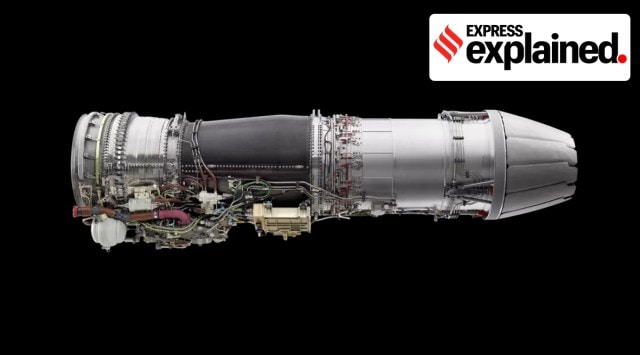

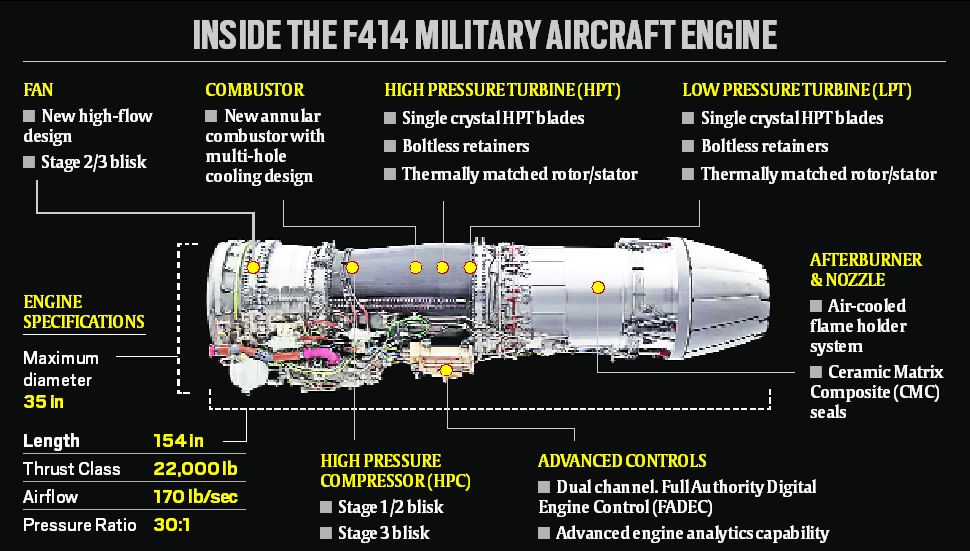
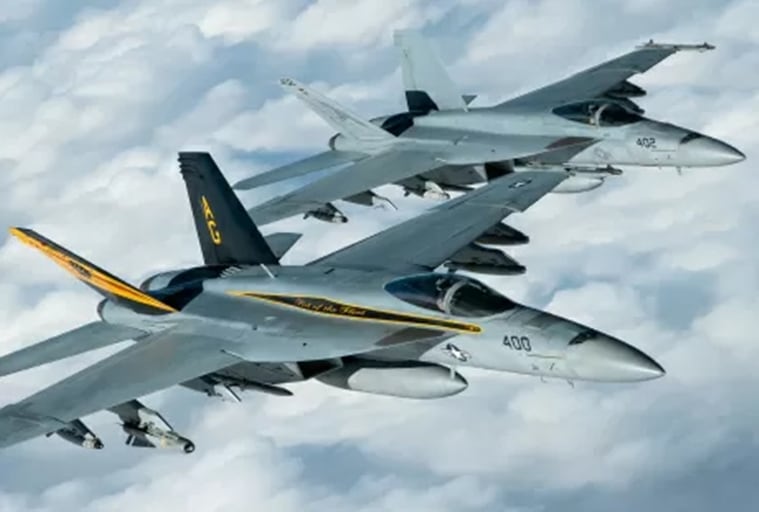 Boeing F/A-18E/F Super Hornet
Boeing F/A-18E/F Super Hornet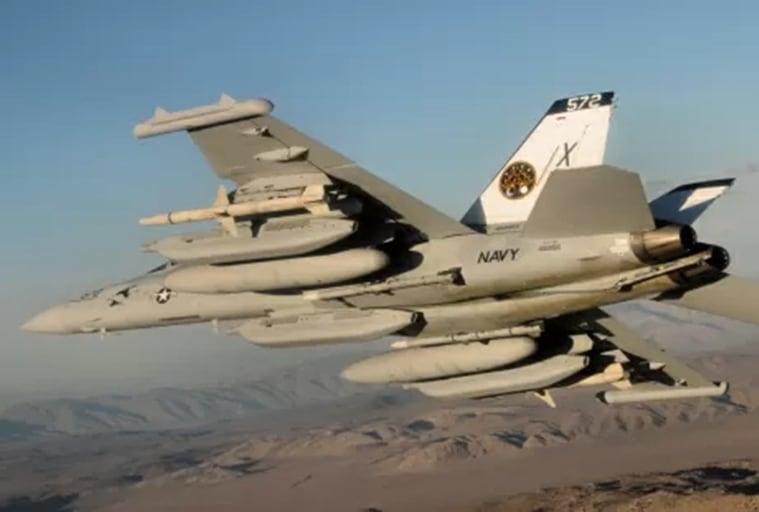 Boeing E/A-18G Growler
Boeing E/A-18G Growler HAL Tejas Mark 2
HAL Tejas Mark 2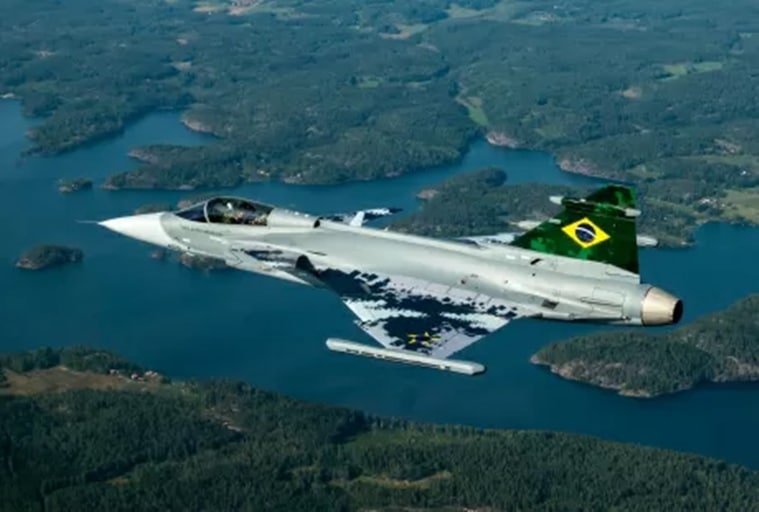 Saab JAS 39E/F Gripen NG
Saab JAS 39E/F Gripen NG




































